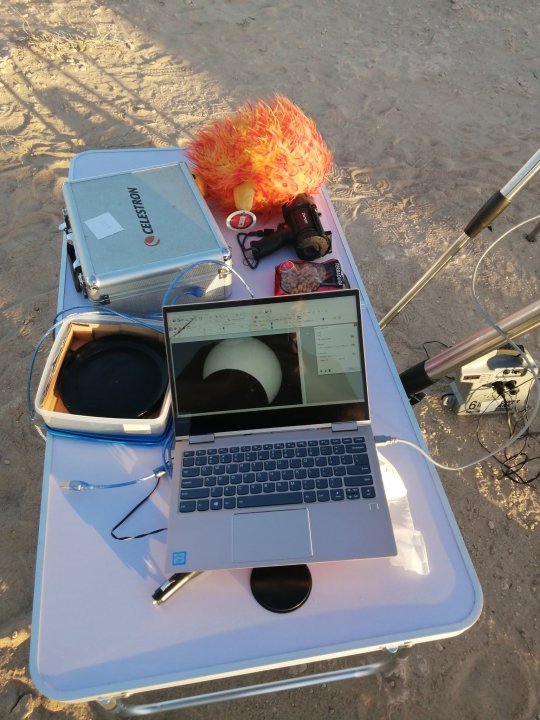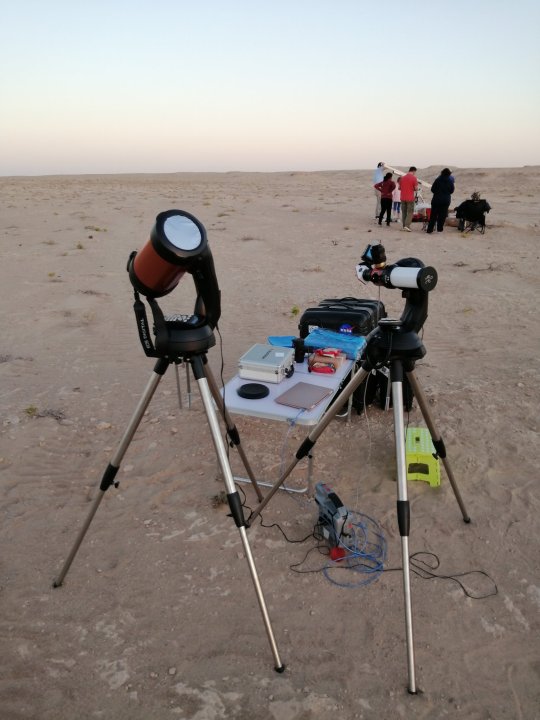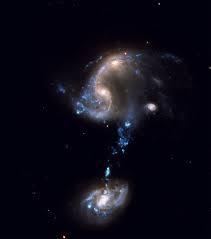Text
The Missing Satellite Problem

In the early 1990s, astronomers began to notice something strange. According to the standard model of cosmology, there should be hundreds of small satellite galaxies orbiting the Milky Way. However, when astronomers looked for these galaxies, they could only find a fraction of them. This discrepancy became known as the "missing satellite problem."
There are a number of possible explanations for the missing satellite problem. One possibility is that the standard model of cosmology is incorrect. Another possibility is that the small satellite galaxies are simply too faint to be seen with current telescopes. However, the most likely explanation is that the small satellite galaxies are made of dark matter.
Dark matter is a mysterious substance that makes up about 85% of the matter in the universe. It does not interact with light or other forms of electromagnetic radiation, so it cannot be directly seen. However, its presence can be inferred from its gravitational effects.
If the small satellite galaxies are made of dark matter, then they would be invisible to telescopes. However, they would still exert a gravitational pull on nearby objects. This gravitational pull could be used to detect the small satellite galaxies, even if they cannot be seen.
In recent years, astronomers have begun to use this technique to search for the missing satellite galaxies. So far, they have found a few dozen small satellite galaxies that were previously invisible. However, there are still many missing satellite galaxies that have not been found.
The search for the missing satellite galaxies is an ongoing effort. Astronomers are using ever-more powerful telescopes to search for these elusive objects. If they are successful, they will gain new insights into the nature of dark matter and the formation of galaxies.
#astronomy#missingsatelliteproblem#darkmatter#cosmology#galaxies#space#science#discovery#research#curiosity
3 notes
·
View notes
Text
Observing Solar Eclipse in Oman Desert



Throwback to the time when one of our researchers had the opportunity to go and observe the Solar eclipse in the Oman desert. Equipement: Celestron Nexstar 6SE white light telescope and LuntSolar H-Alpha
#luntsolar#celestron#solar#sun#astronomy#science#astrophotography#astrophysics#outer space#universe#desert#landscape#day#eclipse
2 notes
·
View notes
Text
Galactic Waterspout; NGC 2799 & NGC 2798

Source: esahubble.org
#galactic#galaxies#celestial#stars#cosmic#cosmos#ngc 2799#ngc 2798#universe#nebula#deep space#space#outer space#blue#gold#astrophotography#astral#beautiful#beauty#escape#pretty#spiritual#photography#nasa#hubble#the unknown#extraterrestrial#stellar#mystical#mysterious
4 notes
·
View notes
Text
JWST And Other Telescopes Images Overlaid

I'm a huge fan of composite images, the combination of different observation methods into a single image. It of course creates a false colour image, this isn't what you're going to see if you sat not so far away in a space craft, but what it does give us is depth to the structure of what makes these places so interesting in the first place.
JWST of course was designed for IR, a range just outside of the visible, so converting that data back down into something visible isn't such a leap, however many things in astronomy cause Radio waves, X-Rays, UV and pretty much the rest of the magnetic spectrum and other detectors don't even look at that, LIGO for example is looking for the stretching and contraction of space/time, so called Gravity waves.
In the above image we see some famous JWST shots now overlaid with additional IR data from Spitzer, X-Rays from Chandra an XMM-Newton, Optical from Hubble and ESA ground based telescopes.
In all, it makes for a beautiful image of our galaxy and those beyond us, both cutting through the dust and gas, while still representing it, seeing the objects such as black holes that otherwise would not give off much light, but may give off excessive X-Rays.
2 notes
·
View notes
Text
NGC 1566

Some galaxies I quite honestly could look at all day, and NGC 1566 is absolutely one of them. The beautiful spiral arms with dust lanes, and the tell tale pink nebula colouring from new born stars bombarding the hydrogen with UV. The milky yellow coloured central area with older and smaller stars and the bright centre of a supermassive black hole, thought to be around 13 million times more massive than our Sun (4.5 million for our own galaxies).
It's one of the closest Seyfert galaxies located approximately 40 million light-years away in the constellation of Dorado (The Dolphinfish), and therefore an object of interest to astronomers.
6 notes
·
View notes
Text
ARP 194

What happens when a galaxy smashes through another, the galaxy at the bottom did this within the last 100 million years (as seen from Earth) and a huge tidal tail has formed between them. Within it, a huge amount of star formation, giving it that blue look.
The bottom galaxy is expected to swing back and eventually merge with two in the upper part of the image, already in a state of merger.
Stars literally get thrown all over the place in slow motion in such galactic smashup's, leading to these amazing structures while this happens.
My Linktree
3 notes
·
View notes
Text
The Southern Pinwheel Galaxy

The Southern Pinwheel galaxy—also known as M82—is ablaze with star formation. Hundreds of thousands of stars live and die in clusters in the spiral arms. This Hubble image unveils a tapestry of the drama spread across 50,000 light-years. Credit: NASA, ESA.
#Hubble Space Telescope#Hubble#nasa#esa#stsci#pinwheel#galaxy#Star formation#space#Astronomy#astrophotography#astrophysics#universe#science#stem#pink
4 notes
·
View notes